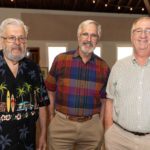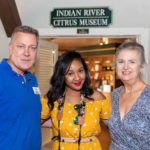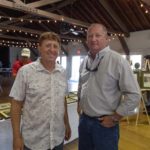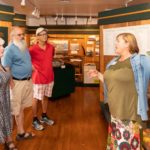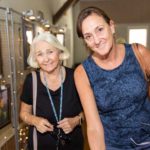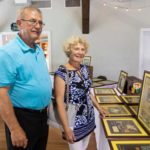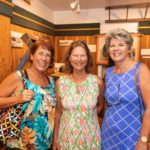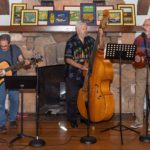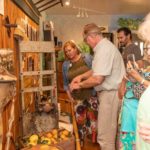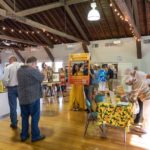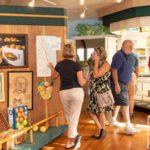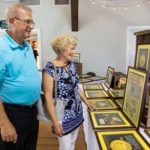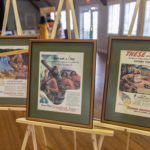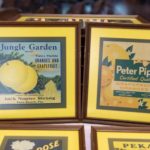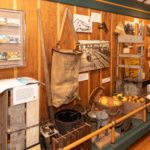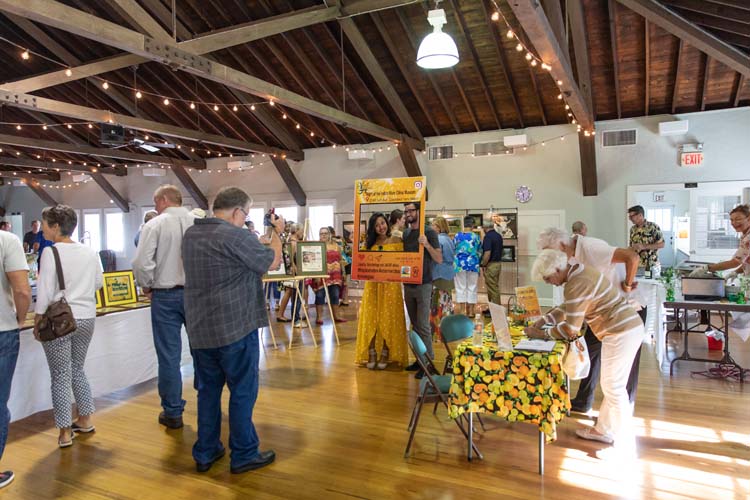
Homegrown citrus farmers flaunted fresh Florida smiles as they talked about the citrus industry’s history, growth and status in today’s environment last Thursday evening at Night at the Indian River Citrus Museum at the Heritage Center and its adjacent Indian River Citrus Museum.
During the open house, first-time visitors with a thirst for knowledge squeezed all the information and folklore they could from museum docents and descendants of local citrus families.
“This is a friend-raising event,” explained Heather Stapleton, Citrus Museum and Heritage Center executive director. “Citrus is more fascinating than anyone can imagine and there are so many residents who have never taken the time to visit us. There is so much history packed into this tiny museum.”
According to Stapleton, the term Indian River Citrus refers to a geographical area that stretches 200 miles along central Florida’s east coast. “It’s actually illegal for growers outside of that area to use the name.”
The Spaniards planted the seeds from which the Florida citrus industry would grow. “Citrus is not native to Florida but was brought over to Florida by the Spanish explorers in the late 1800s. Settlers dug up the hearty roots of the trees planted by the Spaniards and grafted a sweeter variety creating the delectable Indian River citrus,” said Stapleton as she highlighted aspects of local Florida history.
George Hamner of Indian River Exchange Packers shared vintage Indian River citrus labels from his family’s private collection. “At one point there were over 500 different growers, and each one may have had its own label. Some families had more than just one,” said Hamner. “They were placed on the end of wooden packing crates and are very diverse. They depict the way life was in the early years. These days we print our labels directly on cardboard shipping boxes and since there are only about six packing houses left, we don’t have the variety of design.”
Citrus farming and shipping were significantly diminished by canker disease that wiped out a majority of the groves. At the same time, real estate values in Indian River County rose, and many of the barren groves were sold to developers. It was the perfect storm for the demise of an era.
“There aren’t many growers anymore as the land is so valuable for real estate,” said Janie Graves Hoover. “My family was in the packing business since 1920, and I grew up eating delicious fruit. It’s nice to see this industry memorialized as it’s as much a part of Florida history as anything else.”
One could almost smell orange blossoms wafting through the air as guests enjoyed complimentary citrus-infused beer from Orchid Island Brewery and dessert from Sean Ryan Pub as they listened to the Just Add Music (JAM) Band play bluegrass music and viewed Keri Keene’s Old Florida artwork.
On Aug. 17, the Heritage Center will overflow with wine during the Seller to Cellar FINAL Reunion Show. For a schedule of events, visit veroheritage.org.
Article by: Kerry Firth, correspondent
Photos by: Denise Ritchie
Click HERE to see more or buy photos
- Larry Beltz, George Geiger, and George Hamner
- Joe Chiarella, Katherina Paliwoda, and Janie Graves Hoover
- Louis Schacht and Ted Combs
- Kathy and Wayne Hayes with Tom Broomall and Heather Stapleton
- Janice Piston with her daughter, Kim Piston
- Greg and Katie Reader
- Laurie Cooper, Deen Copeland and Kai Martin
- ‘Just Add Music’
- Heather Stapleton and George Hamner
- Night at the Citrus Museum
- Night at the Citrus Museum
- Greg and Katie Reader
- Night at the Citrus Museum
- Night at the Citrus Museum
- Night at the Citrus Museum

